News Release
EMBARGOED UNTIL RELEASE AT 10:00 a.m. EST, Wednesday, November 20, 2024
|
Outdoor Recreation Satellite Account, U.S. and States, 2023New Statistics for 2023; Updates for 2012–2022
The U.S. Bureau of Economic Analysis released statistics today measuring the outdoor recreation economy for the nation, all 50 states, and the District of Columbia. The new U.S. data show that the value added of the outdoor recreation economy accounted for 2.3 percent ($639.5 billion) of current-dollar gross domestic product (GDP) for the nation in 2023 (national table 2). At the state level, value added for outdoor recreation as a share of state GDP ranged from 6.3 percent in Hawaii to 1.6 percent in Delaware, Connecticut, and New York. The share was 0.8 percent in the District of Columbia (state table 1).
Inflation-adjusted (“real”) GDP for the outdoor recreation economy increased 3.6 percent in 2023, compared with a 2.9 percent increase for the overall U.S. economy, reflecting a deceleration from the increase in outdoor recreation of 10.2 percent in 2022 (chart 1 and national table 1). Real gross output for the outdoor recreation economy increased 3.2 percent, while outdoor recreation compensation increased 9.0 percent, and employment increased 3.3 percent (national table 9).
Across all 50 states and the District of Columbia, outdoor recreation employment increased in 49 states and the District of Columbia in 2023, ranging from 7.5 percent in Alaska to −4.8 percent in Indiana. The percentage change was 3.8 percent in the District of Columbia (BEA interactive tables).
Outdoor recreation by activity
Outdoor recreation activities fall into three general categories: (1) conventional activities such as bicycling, boating, hiking, and hunting, (2) other activities such as gardening and outdoor concerts, and (3) supporting activities such as construction, travel and tourism, local trips, and government expenditures.
In 2023, conventional outdoor recreation accounted for 31.4 percent of U.S. outdoor recreation value added, compared with 32.7 percent in 2022 (chart 2). “Other outdoor recreation” accounted for 20.1 percent of value added in 2023, compared with 19.7 percent in 2022. Supporting activities accounted for the remaining 48.5 percent of value added in 2023, compared with 47.6 percent in 2022. Growth in supporting activities was led by travel and tourism, reflecting growth in spending on transportation, hotels, and restaurants (national table 4).
Additional highlights for value added by activity for 2023 are as follows (chart 3 and state table 2):
- Boating/fishing was the largest conventional activity for the nation at $36.8 billion in current-dollar value added and was the largest conventional activity in 34 states and the District of Columbia. The states with the largest contributions were Florida ($4.2 billion), California ($3.1 billion), and Texas ($2.8 billion).
- RVing was the second-largest conventional activity for the nation at $26.3 billion in current-dollar value added and was the largest conventional activity in 11 states. The states with the largest contributions were Indiana ($4.7 billion), Texas ($2.5 billion), and California ($2.0 billion).
- Hunting/shooting/trapping was the third-largest conventional activity for the nation at $14.0 billion in current-dollar value added and was the largest conventional activity in Wyoming. The states with the largest contributions were Texas ($1.7 billion), California ($705.3 million), and Florida ($676.9 million).
- Snow activities for the nation was $7.7 billion in current-dollar value added and was the largest conventional activity in three states (Colorado, Utah, and Vermont.) The states with the largest contributions were Colorado ($1.6 billion), California ($692.6 million), and Utah ($643.4 million).
Outdoor recreation by industry
The outdoor recreation by industry data show the contributions of industries to the outdoor recreation economy, including their impact on value added, gross output, employment, and compensation.
For the nation, the arts, entertainment, recreation, accommodation, and food services industry group was the largest contributor to U.S. outdoor recreation current-dollar value added in 2023, accounting for $165.2 billion, or 25.8 percent (chart 4). At the state level, arts, entertainment, recreation, accommodation, and food services was the largest contributor to outdoor recreation value added in 20 states and the District of Columbia. The states with the largest contributions were California ($22.7 billion), Florida ($21.2 billion), and New York ($11.6 billion) (state table 3).
Retail trade was the second-largest industry group for the nation, at $156.3 billion or 24.4 percent of value added, and was the largest industry group in 26 states. The states with the largest contributions were California ($17.6 billion), Texas ($13.9 billion), and Florida ($12.2 billion).
Manufacturing was the third-largest industry group for the nation, at $86.7 billion or 13.6 percent of value added, and was the largest industry group in two states (Indiana and Louisiana). The states with the largest contributions were Texas ($12.9 billion), California ($11.8 billion), and Indiana ($8.1 billion).
Annual update of outdoor recreation satellite account
At the national level, gross output, value added, employment, and compensation now incorporate the results of the 2024 annual update of the National Economic Accounts, which includes the National Income and Product Accounts and the Industry Economic Accounts, and newly available and revised source data. The state statistics now reflect these updated national data as well as the 2024 annual update of the Regional Economic Accounts and newly available and revised regional source data.
Estimates for 2012 to 2016 now incorporate results of the 2023 comprehensive update. Previously published estimates are available on BEA’s archive page.
Next release: Fall 2025
Outdoor Recreation Satellite Account, U.S. and States, 2024
Note: The Outdoor Recreation Satellite Account news release will no longer include a separate “Release Highlights” document as part of the release’s “Related Materials.” Information previously included in Highlights will continue to be available in the news releases and on BEA’s website.


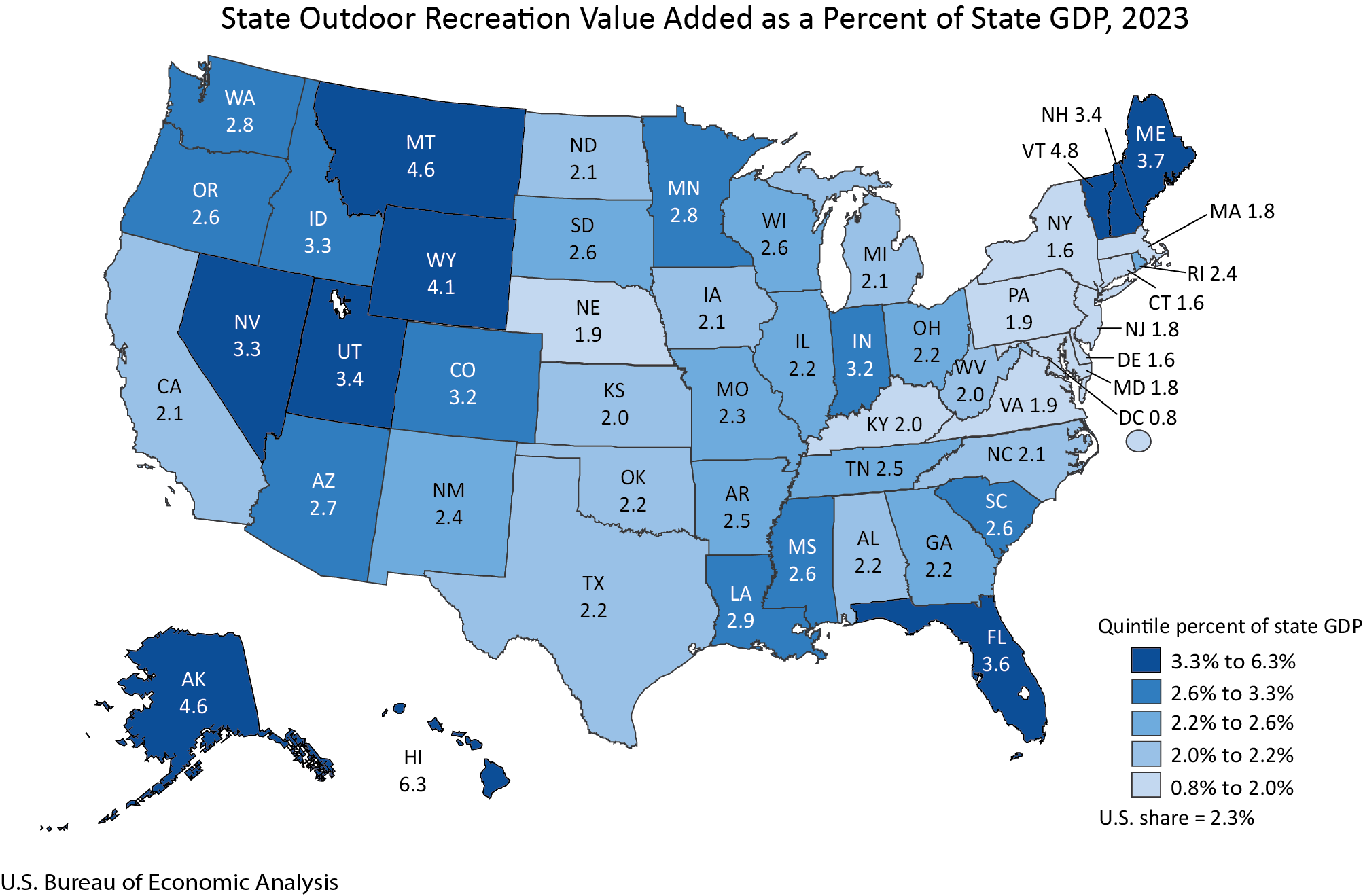
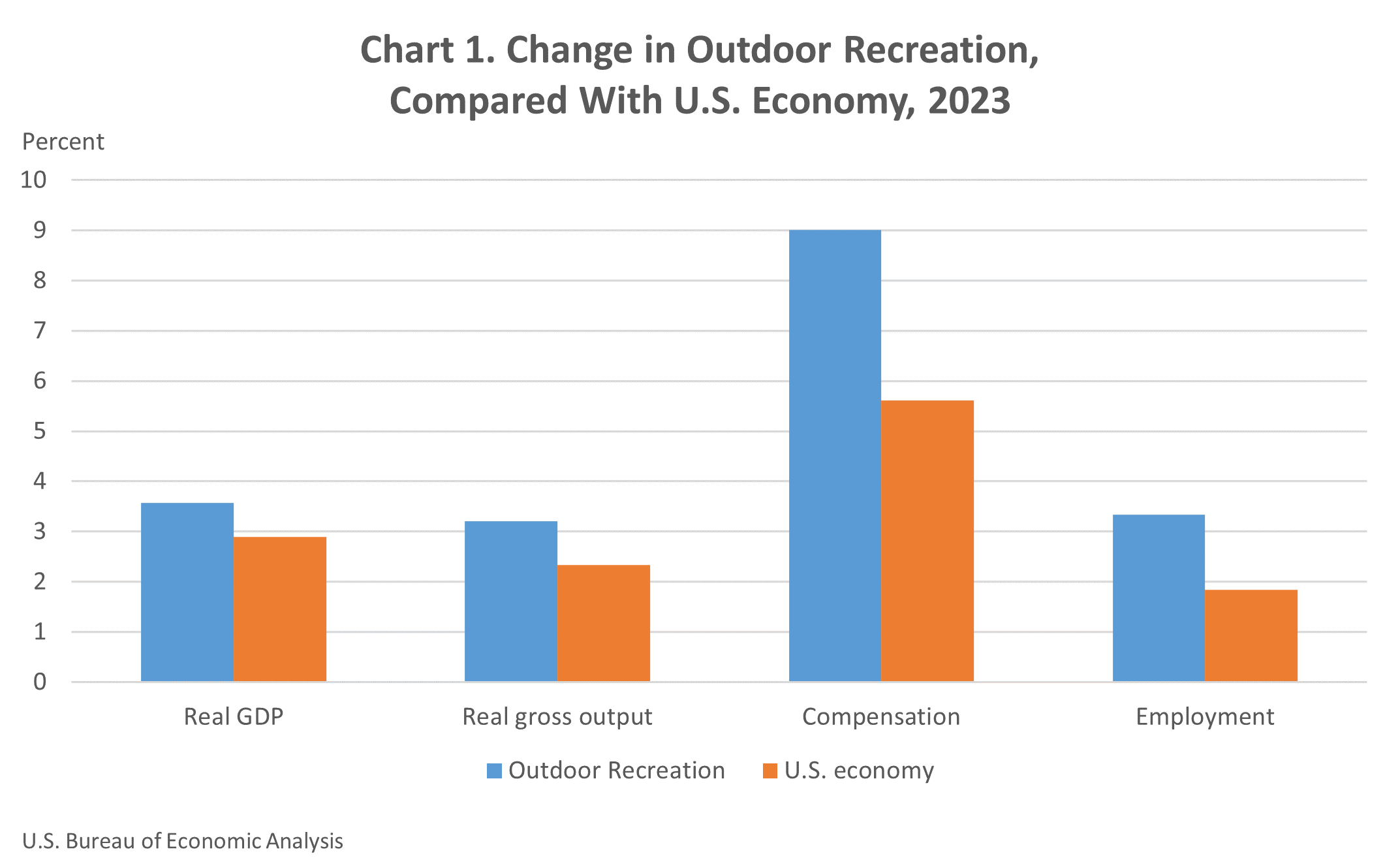

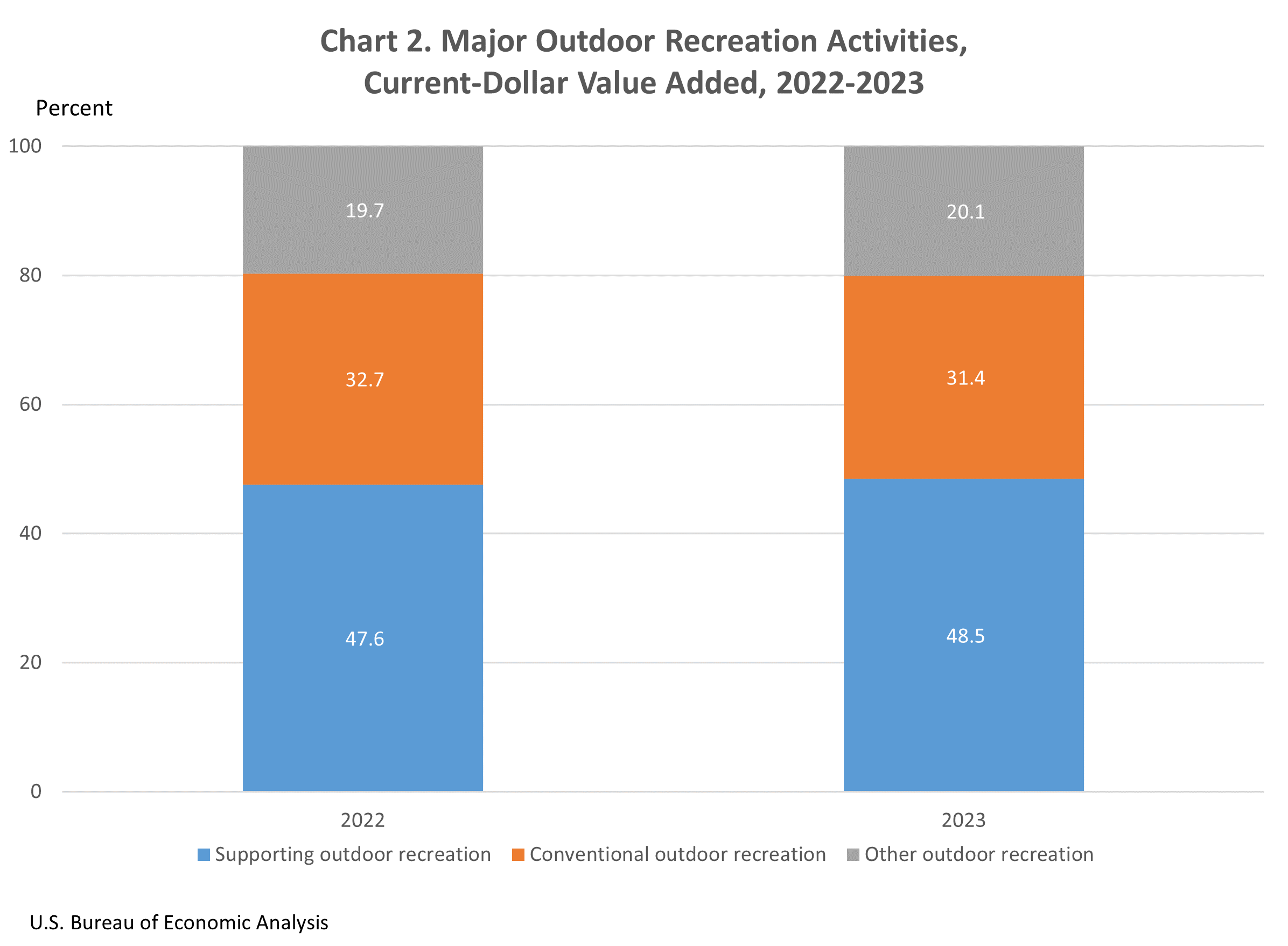
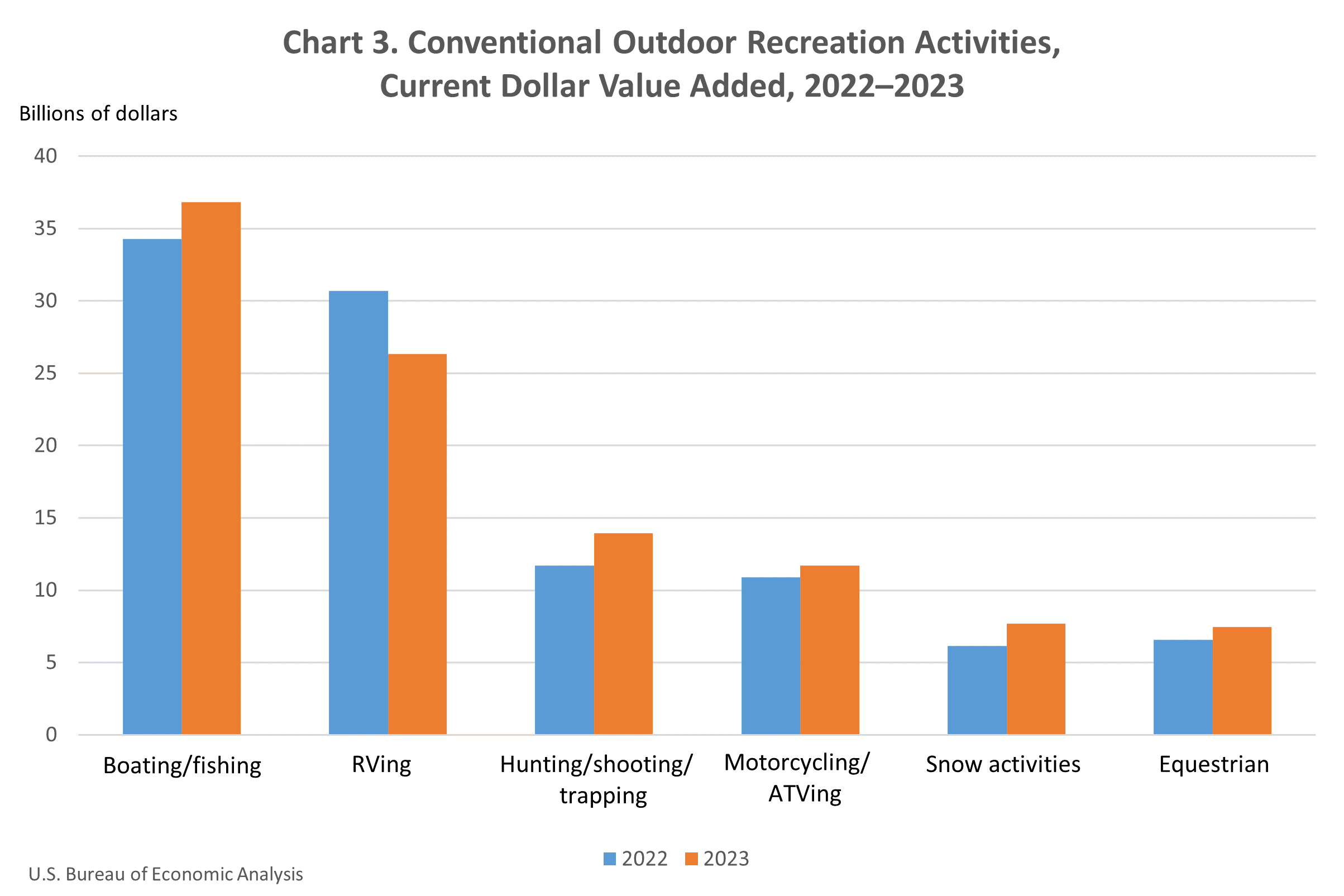
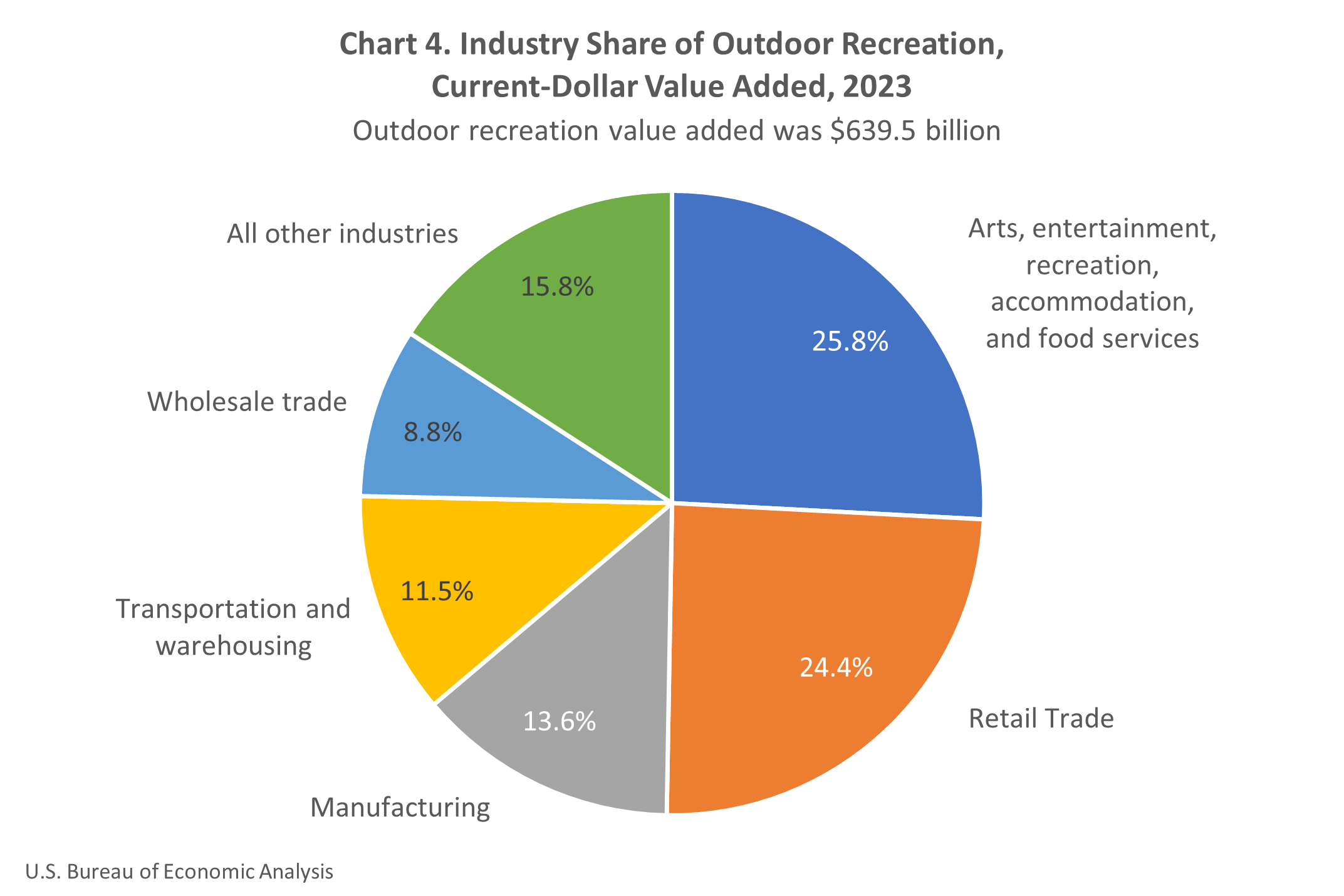



No comments:
Post a Comment